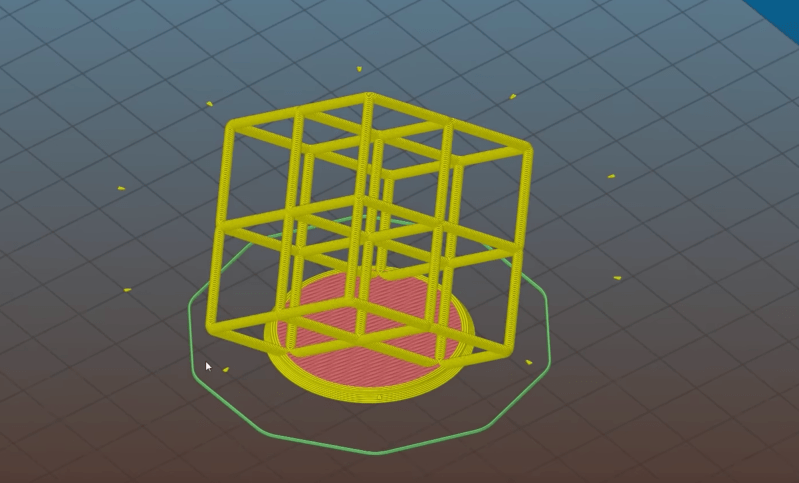If you thought CADing designs for 3D printing was hard enough, wait until you hear about this .stl trick.
[Angus] of Maker’s Muse recently demoed a method for creating hidden geometries in .stl files that are only revealed during the slicing process before a 3D print. (Video, embedded below.) The process involves creating geometries with a thickness smaller than the size of the 3D printer’s nozzle that still appear to be solid in a .stl editor, but will not be rendered by a FDM slicer.
Most 3D printers have 0.4 mm thickness nozzle, so creating geometries with a wall thinner than this value will result in the effect that you’re looking for. Some possible uses for this trick are to create easter eggs or even to mess with other 3D printing enthusiasts. Of course, [Angus] recommends not to use this “deception for criminal or malicious intent” and I’d have to agree.
There’s a few other tricks that he reveals as well, including a way to create a body that’s actually a thin shell but appears to be solid: great for making unprintable letters that reveal hidden messages.
Nevertheless, it’s a cool trick and maybe one of those “features not bugs” in the slicer software.
















“Recently”? Angus posted that video more than a year ago.
See also: the Tesla Pickup article, ~6mo late, same author :/
Like zero pixel images that have extensive “properties” that tag (or worse) emails for tracking et al.
no, not really, zero pixel trackers rely more on the email client or web browser contacting the hosting server for that image and that connection is used to track you as well as get properties of your compter through the request for the image. No one is hiding extra information in your emails, they are hiding an image of nothing so that your client makes the request. The simple solution is to not load external content and view all emails as text only.
The simple solution to this is to have all solids displayed with a bit of transparency, essentially here the outer shell (the dragon egg looking thing) is a shell with a thickness less than the nozzle so that the slicer ignores it and prints the geometry inside.
Please, stop spreading this kind of information! Now, people will stsart to do it and we have to start to check every file. In the right configuration, it could even destroy/stop the print. Now imaginge you have +24h print and in the end there will be a hidden “STL-Virus”… So, please delete this post.
What you’re advocating is terrible. Similar to security by obscurity. Do you also think that people spreading the fact that locks can be opened with picks and rakes should stop sharing that information?
Nobody who’s sharing 3D print models wants the people who they’ve shared them with _not_ to work. More often than not, people request feedback about how tht print went for people with other printers, and will tweak the model accordingly.
This is not an issue. Have you ever encountered an STL with embedded flaws?
And we don’t delete posts.
No,
but you’re (i.e. HaD editors) pretty good at deleting my comments!
B^)
Strange, I post critical comments all the time that don’t get deleted.
This is very interesting, but have you heard of a guy named Bill Masters? I recently read an article on OZY about how Masters developed the first 3D printing patent – then lost it. Anyone know anything about this? Here it is for reference: http://www.ozy.com/flashback/and-he-could-have-been-the-father-of-3d-printing/81198#.WeXu6REalHI.twitter
This is cool, you can do something like add a small watermark or logo somewhere (like under the print) and hide it.
This way those people who don’t like to give credit will have no choice because your little mark will show up by surprise.